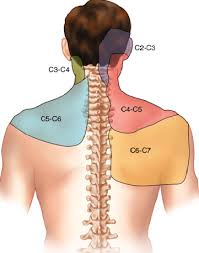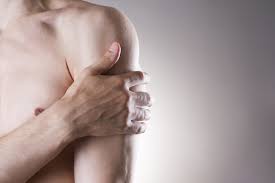Why do we ask so many questions?
 If you are receiving this via our newsletter then you must have been to see us for a consultation at some point (if you are reading it on our blog then you may not have had the pleasure yet). Maybe you only really remember what you came in for and what we did about it, but maybe you also remember that we asked you a whole load of seemingly unrelated questions that didn’t seem to be anything to do with your problem. Admittedly, we do ask some seemingly strange questions, but what we are trying to do is to work out precisely what is causing your pain, and if we are the right people to help with it. As osteopaths we mainly treat problems that arise from the body’s structural parts, like muscles, tendons, and joints, however many other sources of pain are possible and the consultation questioning is designed to help us identify what the source may be. It might come across as if we are not concentrating on the issue at hand (or shoulder) but what we are doing is ensuring you get the best care possible from the appropriate provider. If we take the example of someone who comes in with shoulder pain, we can show you what we mean, below are five of the questions we would ask someone with shoulder pain and why.
If you are receiving this via our newsletter then you must have been to see us for a consultation at some point (if you are reading it on our blog then you may not have had the pleasure yet). Maybe you only really remember what you came in for and what we did about it, but maybe you also remember that we asked you a whole load of seemingly unrelated questions that didn’t seem to be anything to do with your problem. Admittedly, we do ask some seemingly strange questions, but what we are trying to do is to work out precisely what is causing your pain, and if we are the right people to help with it. As osteopaths we mainly treat problems that arise from the body’s structural parts, like muscles, tendons, and joints, however many other sources of pain are possible and the consultation questioning is designed to help us identify what the source may be. It might come across as if we are not concentrating on the issue at hand (or shoulder) but what we are doing is ensuring you get the best care possible from the appropriate provider. If we take the example of someone who comes in with shoulder pain, we can show you what we mean, below are five of the questions we would ask someone with shoulder pain and why.
1 – Is the pain you get worsened (or improved) with movement? And can you make the pain appear by pressing on the area?
This is an obvious one as pain on movement (mostly) would signify that the pain comes from a structure that is musculoskeletal, which we can most likely treat. The second part of the question is trying to identify if the source of the pain is located where it is felt, or if it is referred from another area. Your body is surprisingly bad at reporting sources of pain, even if that pain is musculoskeletal, for instance pain around a shoulder may also come from joints in the neck or upper back. If you can literally put your finger on the area and reproduced the pain it is unlikely to be referred from anywhere else.
%22%20transform%3D%22translate(.5%20.5)%22%20fill-opacity%3D%22.5%22%3E%3Cellipse%20fill%3D%22%2312212d%22%20rx%3D%221%22%20ry%3D%221%22%20transform%3D%22rotate(8.3%20-162.8%20670.4)%20scale(33.41214%2042.15842)%22%2F%3E%3Cellipse%20fill%3D%22%23fba158%22%20cx%3D%22139%22%20cy%3D%22154%22%20rx%3D%2255%22%20ry%3D%2255%22%2F%3E%3Cellipse%20fill%3D%22%23fff%22%20rx%3D%221%22%20ry%3D%221%22%20transform%3D%22matrix(-60.50423%20-11.42728%2015.07712%20-79.82912%20198%2038.8)%22%2F%3E%3Cellipse%20fill%3D%22%23fdffff%22%20rx%3D%221%22%20ry%3D%221%22%20transform%3D%22rotate(-179.3%2043.9%20116.8)%20scale(198%2028.64418)%22%2F%3E%3C%2Fg%3E%3C%2Fsvg%3E) 2 – Do you get any shooting pains into your arm and hand, or have you noticed any weakness or numbness in the arm or hand?
2 – Do you get any shooting pains into your arm and hand, or have you noticed any weakness or numbness in the arm or hand?
The nerves that supply the arm and hand all arise from the neck, pass through the shoulder and down the arm into the fingers, if you have shoulder pain that is accompanied by symptoms such as numbness/tingling/weakness in the arm the shoulder pain may be a symptom of nerve entrapment from the joints or discs in the neck (at the levels of C4-C7) as well as where the nerves travel through the shoulder. If there are symptoms that appear to be nerve related we will then consider the source of the pain to be somewhere along the course of that nerve, as well as possibly being the shoulder.
3 – What is the pain like overnight/is at affecting your sleep?
This always seems like a strange one to be asked, but it can be an important question to ask, mainly because occasionally patterns of pain can indicate serious pathologies. Usually when we ask this question the response is, ‘yes it can be bad at night but only when I’m lying on it, if I turn over then it tends to go away’, usually this would indicate a musculoskeletal problem, but if the pain is much worse at night and unaffected by movement then it could be an indicator of a cancerous growth. As tumours tend to have a large blood supply they can cause the surrounding tissue to be starved of blood leading to pain, this is commonly experienced at night and usually will prevent the person getting back to sleep despite all efforts to do so. Usually night pain is accompanied by other symptoms, but it is a good place to start a line of questioning.
4 – Is the pain affected by eating or drinking alcohol?
One of the stranger questions we might ask someone with shoulder pain but diseases of the liver and gallbladder can commonly refer pain to the top of the right shoulder, occasionally it is the only symptom of an underlying condition. If a person’s shoulder pain is brought on by eating it may be a symptom of a gallbladder issue, or if there is an aversion to alcohol then it could indicate that the liver is involved. Again, it would be expected that other symptoms may be present but this is not always the case.
%22%20transform%3D%22translate(.5%20.5)%20scale(1.07422)%22%20fill-opacity%3D%22.5%22%3E%3Cellipse%20fill%3D%22%23e7e9e8%22%20cx%3D%22156%22%20cy%3D%22169%22%20rx%3D%2238%22%20ry%3D%22113%22%2F%3E%3Cellipse%20fill%3D%22%235b5d5c%22%20rx%3D%221%22%20ry%3D%221%22%20transform%3D%22matrix(-61.99872%20-233.00832%2034.72693%20-9.24012%20234.7%2052.4)%22%2F%3E%3Cellipse%20fill%3D%22%23e4e6e5%22%20rx%3D%221%22%20ry%3D%221%22%20transform%3D%22rotate(96.4%20-27.6%2030.8)%20scale(61.77329%2052.01811)%22%2F%3E%3Cellipse%20fill%3D%22%23665b5f%22%20rx%3D%221%22%20ry%3D%221%22%20transform%3D%22rotate(-60.1%20163.7%2028.5)%20scale(97.731%2032.16995)%22%2F%3E%3C%2Fg%3E%3C%2Fsvg%3E) 5 – How does exertion, such as fast walking effect the pain?
5 – How does exertion, such as fast walking effect the pain?
This question can sound like a repeat of the first question asking if the pain is associated with movement, but what we are trying to find out is if there is an increase in a person’s heart rate does it result in the shoulder pain? If this is the case and the pain also dissipates when the heart slows down again then the pain may be cardiac in nature (in this case possibly angina). As the spinal segments that supply the heart also supply the shoulder the pain can be referred to the same place resulting in (usually left) shoulder pain.
We are lucky that in our profession we don’t often see people with undiagnosed disease, but every so often our extensive questioning reveals that a person’s pain is caused by a disease or condition that is non musculoskeletal, in that instance we would refer that person to the most suitable healthcare provider so they can get the best care available as soon as possible.
Do you want to know what is causing your pain and if we can help? Why not take advantage of our new patient assessment introductory offer to get you started towards a tailor made recovery plan for only £19.
Are you in a lot of pain and want to get better as soon as possible? If so then why not book in for a new patient consultation, with treatment on the day, for £75.
We are also there to help you from home. Take a look at our suite of exercise resources and advice sheets which you can easily download and use from home.
Sources –
Carnes, M, & Vizniak, N. (2011). Conditions Manual. Professional Health Systems, Canada.
Souza, T. (2009). Differential Diagnosis and Management for the Chiropractor. 4th ed, Jones and Bartlett, Sudbury.
Goodman, C. Snyder, T. (2000). Differential Diagnosis in Physical Therapy. 3rd Ed, Elsevier, Philadelphia.
Magee, D. Zachazewski, J. and Quillen, W., 2009. Pathology and Intervention in Musculoskeletal Rehabilitation, Missouri, Elselvier.

 2 – Do you get any shooting pains into your arm and hand, or have you noticed any weakness or numbness in the arm or hand?
2 – Do you get any shooting pains into your arm and hand, or have you noticed any weakness or numbness in the arm or hand? 5 – How does exertion, such as fast walking effect the pain?
5 – How does exertion, such as fast walking effect the pain?